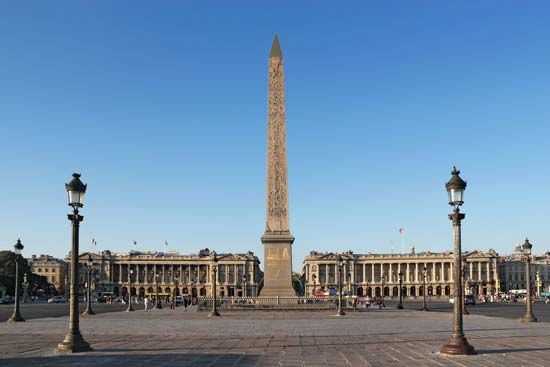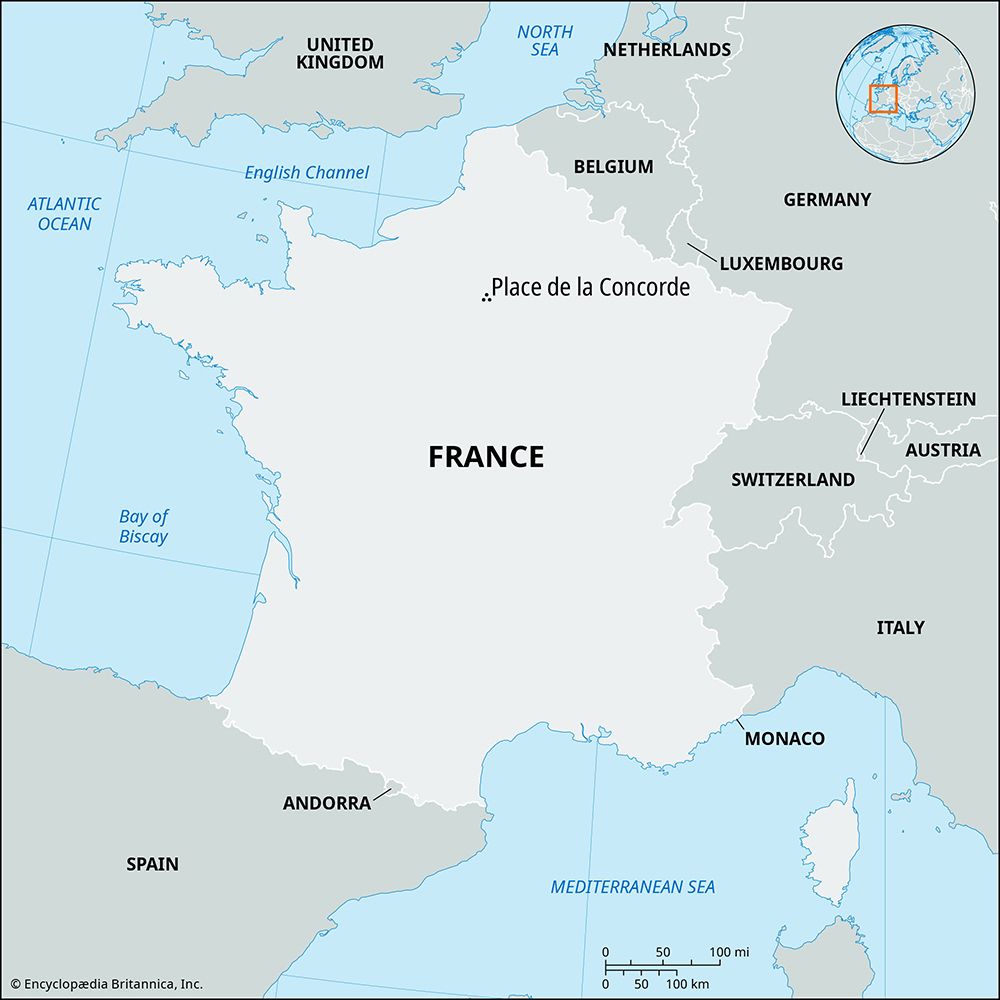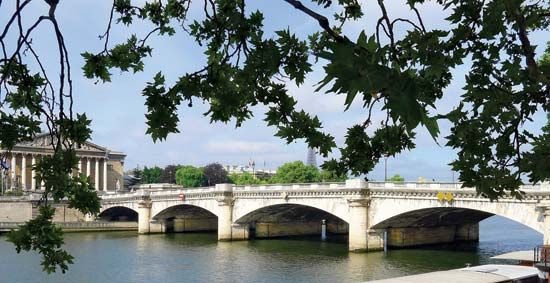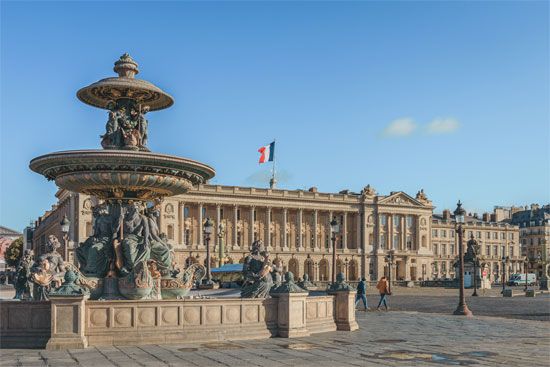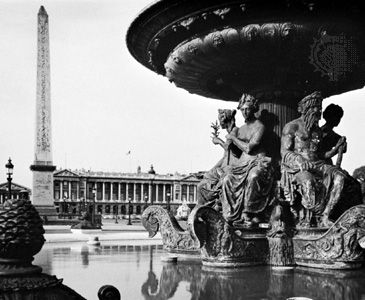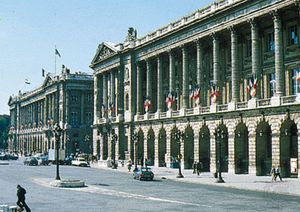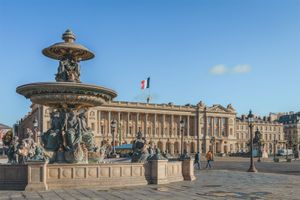Place de la Concorde
- Formerly:
- Place Louis XV, Place de la Révolution, Place de la Chartre, and Place Louis XVI
Place de la Concorde, public square in central Paris, situated on the right bank of the Seine between the Tuileries Gardens and the western terminus of the Champs-Élysées. It was intended to glorify King Louis XV, though during the French Revolution various royals, including Louis XVI, were executed there. In modern Paris, a temporary stand is built in the square each year from which dignitaries review the military parade on Bastille Day.
Occupying an area of approximately 18.8 acres (7.6 hectares), the Place de la Concorde is the largest square in Paris. A design by Ange-Jacques Gabriel won a competition to provide suitable surroundings for a previously commissioned bronze equestrian statue of Louis XV. The moat-skirted square—technically an octagon because of its cut-off corners—was approved in 1755, but Edmé Bouchardon’s statue of the king was not put into place until 1763. The southwestern side of the square was left open to the river. On the opposite side, flanking the rue Royale, Gabriel placed two matching buildings, now called the Hôtel de la Marine and the Hôtel de Crillon. Their arcaded ground floors and colonnaded facades are somewhat reminiscent of the Louvre. Around the periphery of the square, Gabriel built eight giant pedestals upon which statues representing provincial capitals were eventually placed. Viewed clockwise from the Hôtel de la Marine, the statues symbolize Lille, Strasbourg, Lyon, Marseille, Bordeaux, Nantes, Brest, and Rouen. Jean Perronet’s Pont Louis XV, a bridge over the Seine, was begun in 1787 but not completed until 1791, by which time the French Revolution was underway. The bridge was successively renamed Pont de la Révolution and Pont de la Concorde.
In 1792, amid revolutionary fervor, the statue of the king was removed and destroyed. In the following year the square was renamed Place de la Révolution. The guillotining of Louis XVI took place on January 21, 1793, near the pedestal that now holds the statue of Brest. Four months later the guillotine was erected near the gates of the Tuileries, and the executions continued for nearly three years. Among those who died in that location were Queen Marie-Antoinette and the revolutionary Maximilien Robespierre. In 1795 the square was named Place de la Concorde, and two monumental marble sculptures by Guillaume Coustou called the Horses of Marly (Chevaux de Marly), were installed at the entrance to the Champs-Élysées.
In ensuing years, the square underwent several changes of name, becoming at various times Place de la Chartre, Place Louis XV again, and Place Louis XVI. It regained its present name in 1830. In 1836, during the reign of Louis-Philippe, the Luxor Obelisk was installed at the center of the square. The obelisk, an Egyptian artifact originally constructed in about 1300 bce, is 74.9 feet (22.83 meters) in height. Flanking the obelisk are two fountains designed by Jacques Ignace Hittorff, an architect who also supervised other modifications. In the 1850s, during the reign of Napoleon III, the moat was filled in, and the square came closer to its present-day appearance. Facing the square on the grounds of the Tuileries Gardens, the Orangerie was built in 1852 as a shelter for orange trees, and the Jeu de Paume was built in 1861 as a ball-game court. Both buildings now serve as museums. In 1984 the Horses of Marly were removed for preservation to the Louvre and replaced, on the Champs-Élysées site, by copies.

